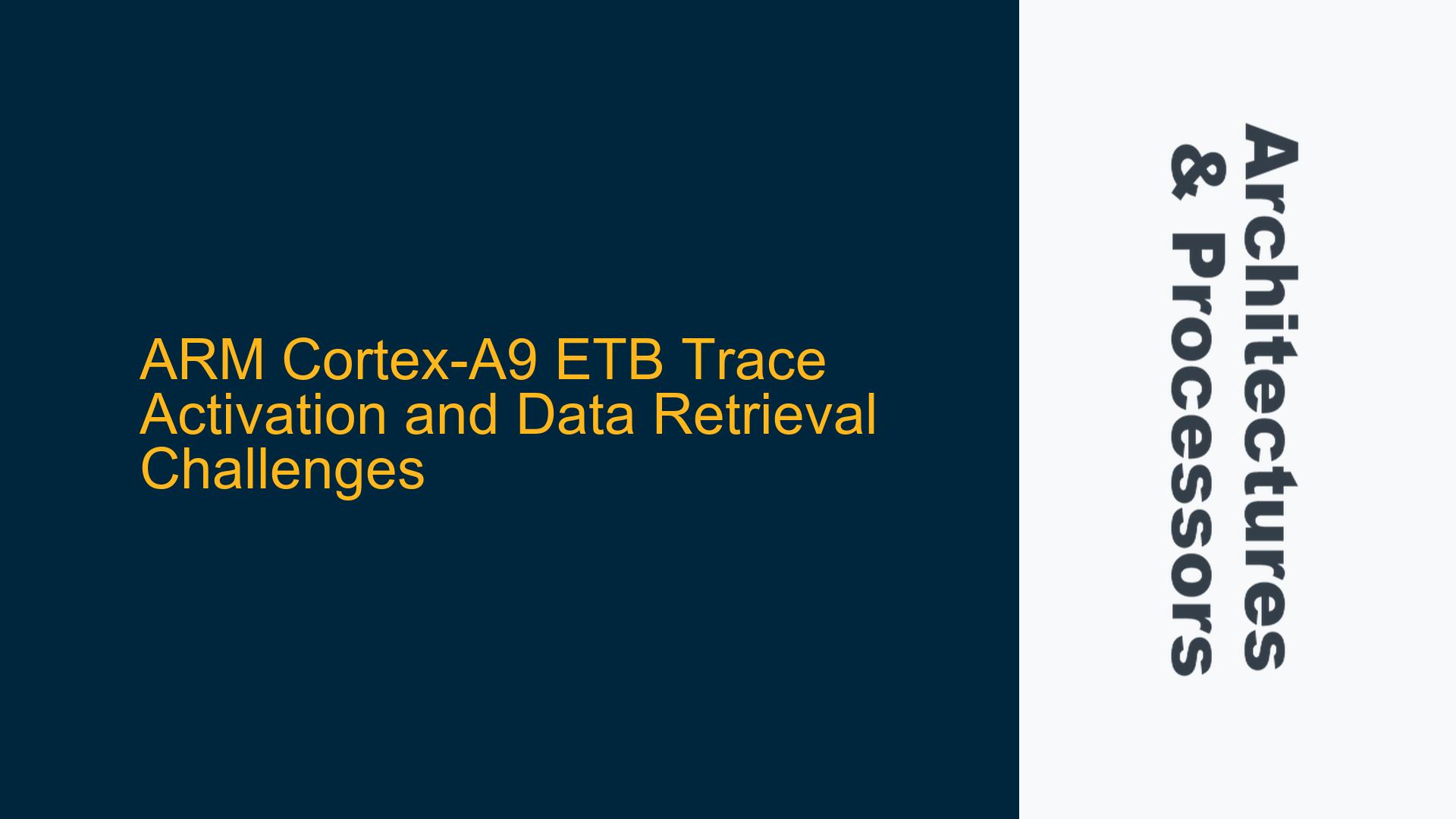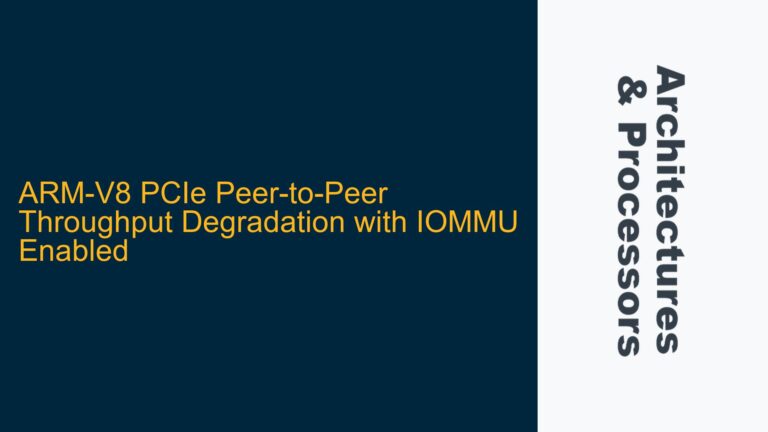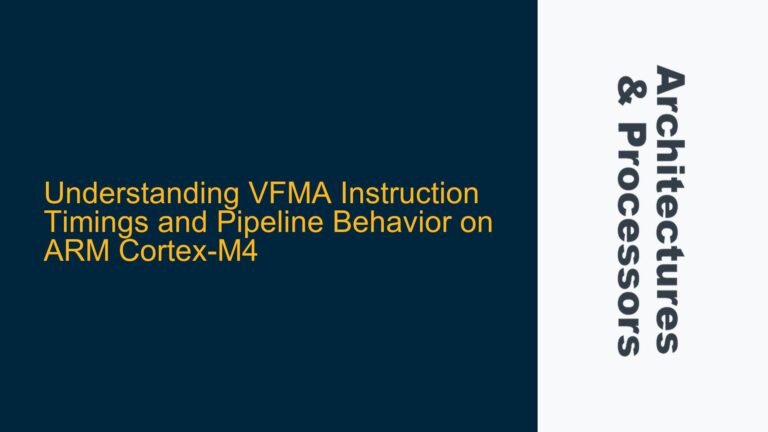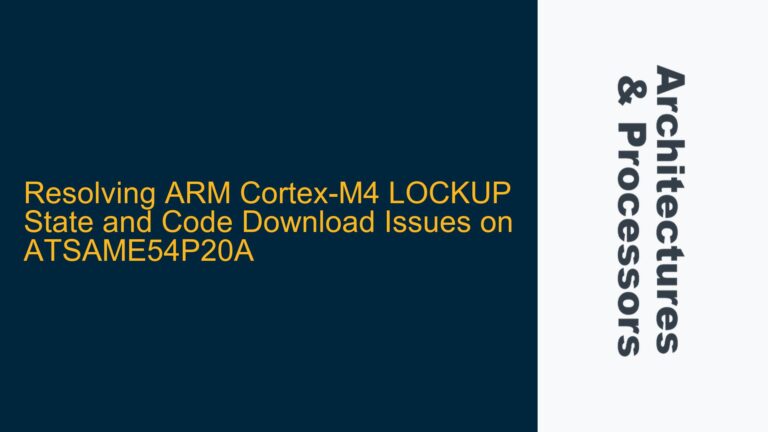ARM Cortex-A9 ETB Trace Activation and Data Retrieval Challenges
The ARM Cortex-A9 processor, widely used in embedded systems, provides advanced debugging and tracing capabilities through its Embedded Trace Buffer (ETB) and Program Trace Macrocell (PTM). However, enabling and retrieving trace data from the ETB programmatically can be challenging, especially when attempting to do so from software running on the same core. This guide delves into the intricacies of ETB trace activation, data retrieval, and the common pitfalls encountered during the process.
CoreSight Trace Components and Memory Map Accessibility
The CoreSight trace architecture in ARM processors, including the Cortex-A9, consists of several components: the trace macrocell (ETM or PTM), trace links, and trace sinks (such as the ETB). For software to access and control these components, they must be mapped into the system’s memory space. This mapping allows the processor to programmatically configure the trace components, enable tracing, and retrieve trace data.
In the Cortex-A9, the PTM is responsible for generating instruction flow trace data, which is then captured by the ETB. The PTM and ETB must be correctly initialized and configured before tracing can begin. The memory addresses for these components are typically defined in the processor’s technical reference manual or the SoC vendor’s documentation. For instance, in the NXP i.MX6Quad, the memory-mapped registers for the PTM and ETB must be identified and accessed using their base addresses.
A common issue arises when the trace components are not correctly mapped into the memory space, or when the memory addresses are incorrectly configured. This can prevent the software from accessing the PTM and ETB registers, leading to failed trace activation. To resolve this, ensure that the memory map for the CoreSight components is correctly defined and that the base addresses are accurately specified in the software.
PTM Configuration and Trace Activation Sequence
The Program Trace Macrocell (PTM) in the Cortex-A9 must be properly configured to generate trace data. The PTM supports various trace modes, including tracing all execution, tracing specific address ranges, and tracing based on event triggers. The configuration process involves setting up the PTM control registers, enabling trace generation, and specifying the trace mode.
The sequence for enabling trace in the Cortex-A9 involves several steps. First, the ETB must be enabled to act as the trace sink. This involves setting the appropriate control bits in the ETB control register to enable trace capture. Next, the PTM must be configured and enabled. This includes setting the trace mode, enabling trace generation, and ensuring that the PTM is synchronized with the ETB.
A critical step in this process is ensuring that the PTM and ETB are correctly synchronized. The PTM generates trace data in a compressed format, which is then captured by the ETB. If the PTM and ETB are not synchronized, trace data may be lost or corrupted. This synchronization is typically achieved by configuring the PTM and ETB control registers to ensure that they operate in a coordinated manner.
Once the PTM and ETB are configured and enabled, the software can execute the code to be traced. After the trace data is captured, the PTM and ETB must be halted to stop trace generation and capture. The trace data in the ETB can then be retrieved and decoded for analysis.
ETB Data Retrieval and Decoding Challenges
Retrieving trace data from the ETB involves reading the captured trace data from the ETB memory and decoding it to reconstruct the instruction flow. The ETB stores trace data in a compressed format, which requires decoding to interpret the trace information. This decoding process can be complex, as it involves understanding the trace packet format and reconstructing the instruction flow from the compressed data.
One of the challenges in retrieving trace data from the ETB is ensuring that all trace data is flushed from the PTM to the ETB before reading. If the PTM is not properly halted or if the ETB is not correctly flushed, trace data may be incomplete or missing. This can result in incomplete or inaccurate trace analysis.
To address this, the software must ensure that the PTM is halted and that any remaining trace data in the PTM is flushed to the ETB before reading the ETB contents. This typically involves setting the appropriate control bits in the PTM and ETB control registers to halt trace generation and flush the trace data.
Another challenge is decoding the trace data. The compressed trace data must be decoded to reconstruct the instruction flow. This requires a detailed understanding of the trace packet format and the ability to interpret the compressed data. Tools and libraries, such as the CoreSight Access Library (CSAL), can assist in this process by providing functions to decode the trace data and reconstruct the instruction flow.
OS Lock Register and Trace Activation
A critical aspect of enabling trace in the Cortex-A9 is the OS Lock register. The OS Lock register is used to protect access to the CoreSight components, including the PTM and ETB. When the OS Lock register is set, access to the CoreSight components is restricted, preventing software from configuring or enabling trace.
In some cases, the OS Lock register may be set by default, preventing software from accessing the PTM and ETB. To enable trace, the software must first unlock the OS Lock register by writing the appropriate value to the register. Once the OS Lock register is unlocked, the software can access and configure the PTM and ETB to enable trace.
Failure to unlock the OS Lock register is a common issue that can prevent trace activation. If the OS Lock register is not unlocked, attempts to configure or enable the PTM and ETB will fail, and trace data will not be captured. To resolve this, ensure that the OS Lock register is correctly unlocked before attempting to configure or enable trace.
Bare-Metal vs. RTOS/Linux Trace Implementation
The implementation of trace activation and data retrieval can vary depending on the operating environment. In a bare-metal system, the software must directly configure and control the PTM and ETB registers. This involves writing to the memory-mapped registers to enable trace, configure the PTM, and retrieve trace data from the ETB.
In an RTOS or Linux environment, the process may be simplified by using libraries and tools provided by the operating system or the CoreSight architecture. For example, the CoreSight Access Library (CSAL) provides functions to configure and control the CoreSight components, including the PTM and ETB. Using CSAL can simplify the process of enabling trace and retrieving trace data, as it abstracts the low-level register access and provides higher-level functions for trace configuration and data retrieval.
When implementing trace in a bare-metal system, it is essential to ensure that the software correctly configures the PTM and ETB registers and handles the trace data retrieval and decoding process. In an RTOS or Linux environment, leveraging libraries like CSAL can reduce the complexity of the implementation and provide a more robust solution for trace activation and data retrieval.
Conclusion
Enabling and retrieving trace data from the ETB in an ARM Cortex-A9 processor involves several steps, including configuring the PTM, enabling the ETB, and correctly synchronizing the trace components. Challenges such as memory map accessibility, PTM configuration, ETB data retrieval, and OS Lock register management must be addressed to successfully capture and decode trace data. Whether implementing trace in a bare-metal system or under an RTOS/Linux environment, understanding the CoreSight architecture and leveraging available tools and libraries can simplify the process and ensure accurate trace data capture and analysis.






